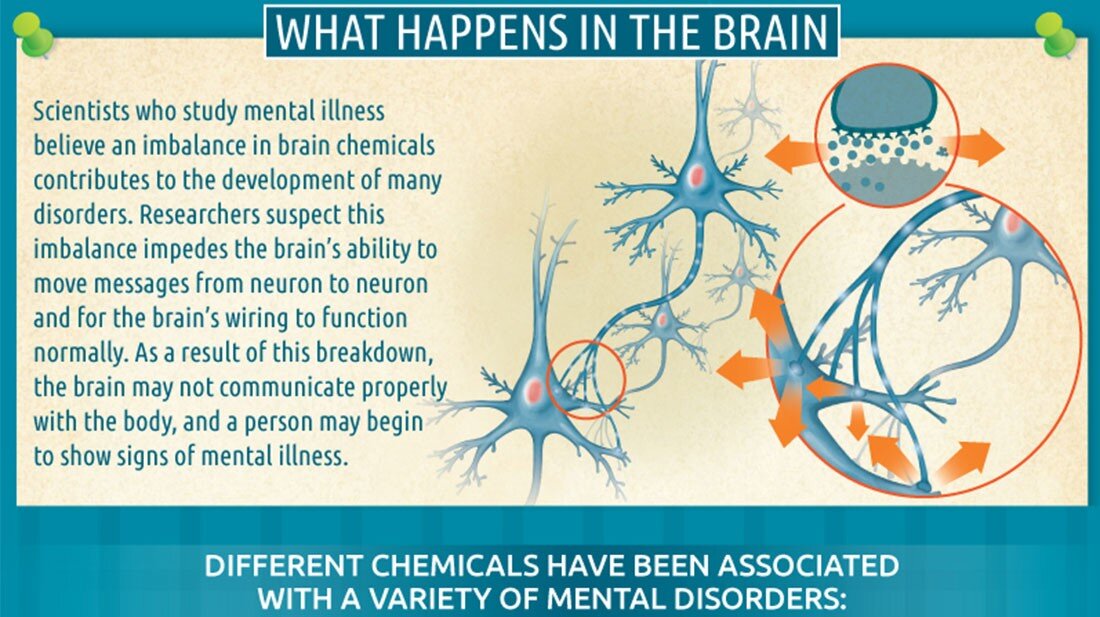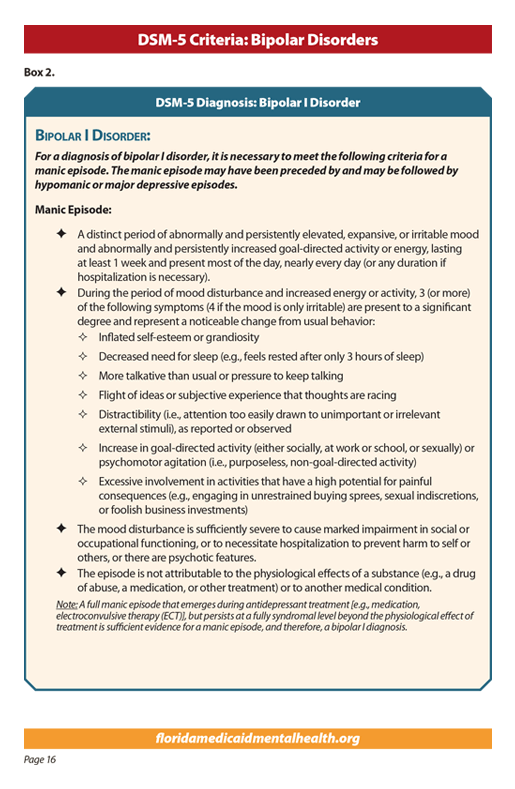

Schizophrenia, schizoaffective disorder, and bipolar disorder all can involve When someone is experiencing both psychotic and mood symptoms, it can be difficult to determine what he or she is truly experiencing. (More on schizoaffective disorder symptoms here.) Schizoaffective Disorder: Psychotic Features, Mood Features The symptoms aren’t caused by substance use.Mood symptoms are present for the majority of the illness.Delusions or hallucinations for two or more consecutive weeks without mood symptoms sometime during the life of the illness.A major mood episode (either major depression or mania) that lasts for an uninterrupted period of time.Schizoaffective disorder includes at least two of the above symptoms related to psychotic disorders and these DSM-5 criteria: Negative symptoms (flat expressions, loss of pleasure/anhedonia, lack of motivation/avolition, and other experiences that are “taken away” from the person).Grossly disorganized or catatonic behavior.Disorganized speech (speech that is easily derailed or is incoherent).Someone with schizoaffective disorder meets the primary criteria (Criterion A) for schizophrenia, which includes two or more of the following:

The American Psychiatric Association explains schizoaffective disorder in the DSM-5, the book that is the accepted authority on mental illness and personality disorders. Let’s take a deeper look to answer the question: What is schizoaffective disorder? Schizoaffective Disorder DSM-5 This basic description of this disorder is accurate, but it falls a bit short. To receive a schizoaffective disorder diagnosis, someone must meet all the primary criteria for schizophrenia and have prominent mood disorder symptoms as well. This rare mental illness is related to both schizophrenia and bipolar disorder or major depressive disorder and affects approximately one-third fewer people than schizophrenia. In addition to psychotic features, schizoaffective disorder has significant mood symptoms. El mantenimiento del diagnóstico de trastorno mixto ansioso-depresivo, del duelo como criterio de exclusión de depresión mayor, o el diagnóstico de episodio mixto en el trastorno bipolar, son algunas de las principales divergencias en la versión beta de la CIE-11 respecto al ya editado DSM-5.Schizoaffective disorder is, like schizophrenia, a psychotic disorder. Las convergencias destacables son la inclusión del trastorno bipolar II en la CIE-11 y la exigencia adicional, además de la euforia o la irritabilidad, de un aumento de la energía o de la actividad para el diagnóstico de hipo/manía en ambas clasificaciones. Las principales novedades agregadas comprenden la incorporación de parámetros dimensionales para la evaluación de los síntomas, la posibilidad de diagnosticar cuadros subumbrales del espectro bipolar, la consideración de nuevos especificadores de curso como los síntomas mixtos, la desaparición del diagnóstico de episodio mixto, y el aumento del umbral para el diagnóstico de hipo/manía. En este artículo hacemos una revisión crítica de los puntos que pueden aproximar y aquellos que pueden dificultar la convergencia de los trastornos bipolares, así como de aquellas condiciones clínicas incluidas dentro de los trastornos depresivos con especial relevancia para los trastornos bipolares (p. Las clasificaciones DSM-5 y CIE-11, esta última en elaboración, pretenden armonizar los diagnósticos de los trastornos mentales.


The main differences are, most likely keeping the mixed depression and anxiety disorder diagnostic category, maintaining bereavement as exclusion criterion for the depressive episode, and maintaining the mixed episode diagnosis in bipolar disorder in the forthcoming ICD-11. The most noticeable points of convergence are the inclusion of bipolar II disorder in ICD-11 and the additional requirement of an increase in activity, besides mood elation or irritability, for the diagnosis of hypo/mania in both classifications. The main novelties include the incorporation of dimensional parameters to assess the symptoms, as well as the sub-threshold states in the bipolar spectrum, the consideration of new course specifiers such as the mixed symptoms, the elimination of mixed episodes, and a more restrictive threshold for the diagnosis of hypo/mania. A critical review is presented in the issues that can converge or separate both classifications regarding bipolar disorders, and those conditions –included in depressive disorders–with special relevance for bipolar (e.g. The DSM-5 and ICD-11 classifications, the latter still under development, are aimed at harmonizing the diagnoses of mental disorders.


 0 kommentar(er)
0 kommentar(er)
